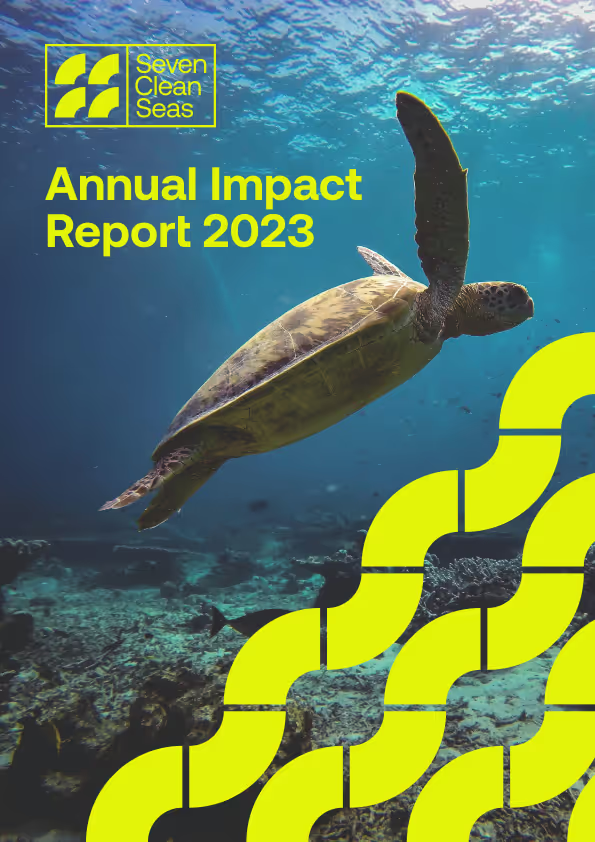Plastic neutrality is achieved when the plastic used in a product, activity, service or whole organisation is netted off by purchasing an equivalent number of offsets. To achieve plastic neutrality, a company can work on improving waste management, recycling, or purchasing plastic credits. A plastic credit represents an equivalent amount of plastic that has been removed from the environment and adequately treated.
In essence, it works pretty similarly to carbon neutrality- where companies purchase an offset that represents their carbon footprint. In theory, it makes sense- companies are using plastic (or carbon) and then compensating for their footprint. However, in practice, this concept is difficult to apply, regulate and communicate. In part, it is because the market is still in its early stages, and there is no regulation to ensure that plastic offsets are managed appropriately. In addition, there are similar challenges to carbon offsets, where there are different qualities of offsets, and one offset may not actually represent what the company is producing. For example, in relation to carbon, a company may plant some trees to sequester carbon, but the actual sequestration of those trees is not the same as what the company is emitting.

However, regardless of the many challenges with offsetting, how does a company achieve a plastic-neutral status in theory?
To effectively and transparently achieve plastic neutrality, a company must first measure their plastic footprint. A company cannot claim 'plastic neutral' if they don't even know what their footprint is. They must ensure that their measurement methodology is robust and accurately represents their impact. Not only does measurement allow companies to determine how much plastic they need to offset to become plastic neutral, but it also allows them to identify hotspots to work on reduction strategies. This leads us to the second point, reduce. A company must first try to reduce all the plastic that can be realistically and cost-effectively reduced before they purchase any offsets. This will ensure that plastic offsets are not only a short-term solution but are a transitional solution for more transformative change in eliminating plastics. Finally, after companies have measured, reduced and implemented long-term strategies to track their progress and eliminate their plastic use and disposal, an organisation can offset their footprint.
How do offsets work?
As mentioned above, a plastic offset represents an equivalent amount of plastic recovered from the environment. A company can purchase as many offsets as required to become plastic neutral. However, it is essential to note that plastic offsets are only as good as the projects that generate them. Projects need to align with the industry’s best practices, and there is a need for strong requirements to ensure that plastic which is collected is also correctly managed and sent to a beneficial end destination and that it won’t leak back into the environment. Offsetting projects need to safeguard both the environment and the people involved in the plastic collection process.
Achieving plastic neutrality through offsets can be an effective measure to help mobilise corporate capital to fund plastic collection projects in areas most affected by plastic pollution. It also holds polluters accountable for their products or services' impact on the environment.

But again, like with every sustainability claim nowadays, we need to ensure that offsets are actually having a positive impact on the environment and the community, and it is not just another marketing stunt by corporations to look like they are doing good and hiding behind those claims. An organisation could, in theory, still achieve plastic neutrality by acquiring the plastic offsets without taking any actions to reduce their plastic footprint, therefore not really addressing the real issue, which is preventing plastic from being used and disposed on the first place.We believe there’s a strong need to rethink plastic as a whole, especially:
- Rethinking packaging: This means innovating at the design stage of the packaging product (packaging concept, format, components, choice of material) to provide the same essential function of product preservation while eliminating waste. An example of this is moving from non-recyclable to recyclable packaging formats.
- Rethinking the product: This involves innovation in product design (product formulation, concept, shape, size) to change its packaging needs while maintaining or improving the experience of the purchaser. An example of this is changing a physical product for a digital one or a liquid product for a solid one.
- Rethinking the business model: This involves innovating at the system design level (business model, supply chain, production location, product delivery) to change packaging needs. For example, selling products in refillable or returnable packaging instead of single-use packaging. Or localise production so that freshness can be guaranteed without relying on complex, often less recyclable packaging which is usually required in global supply chains.















